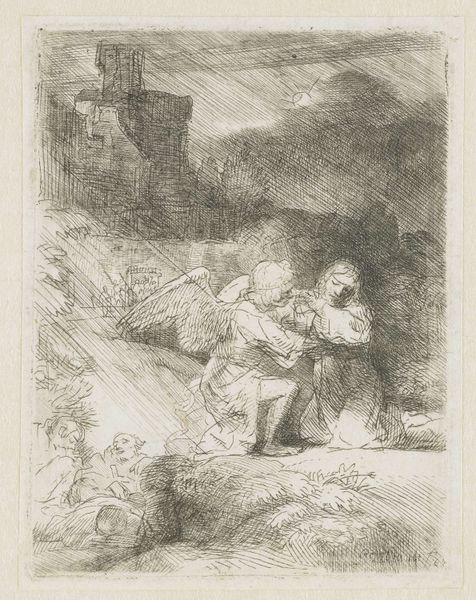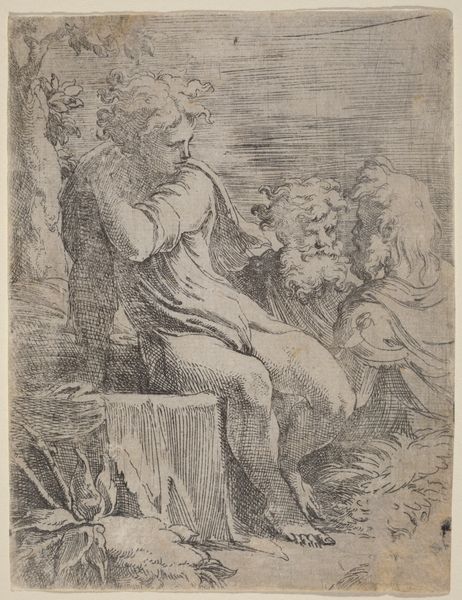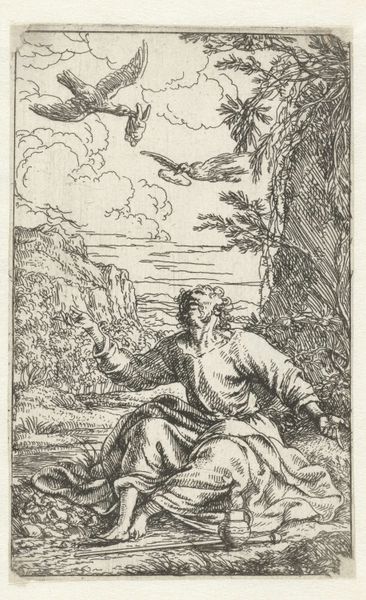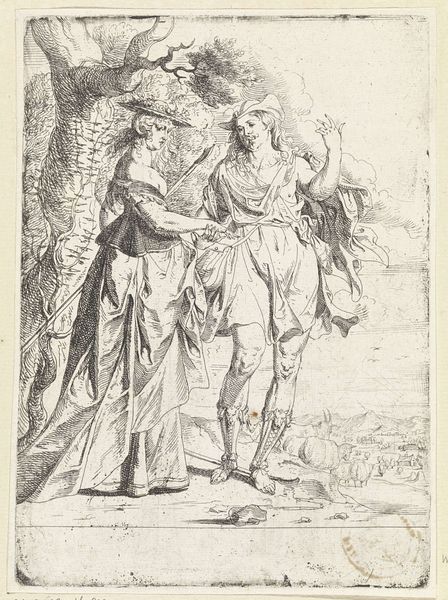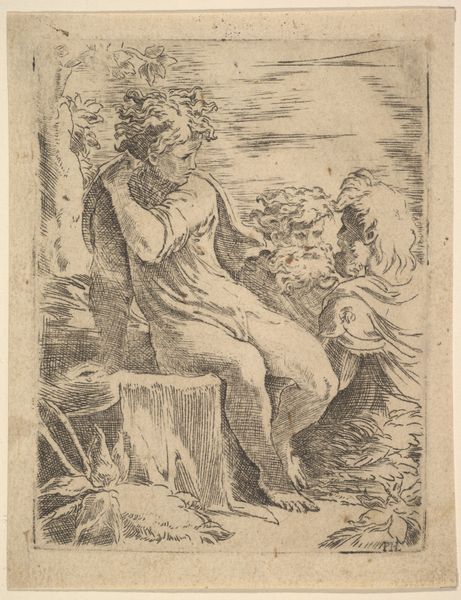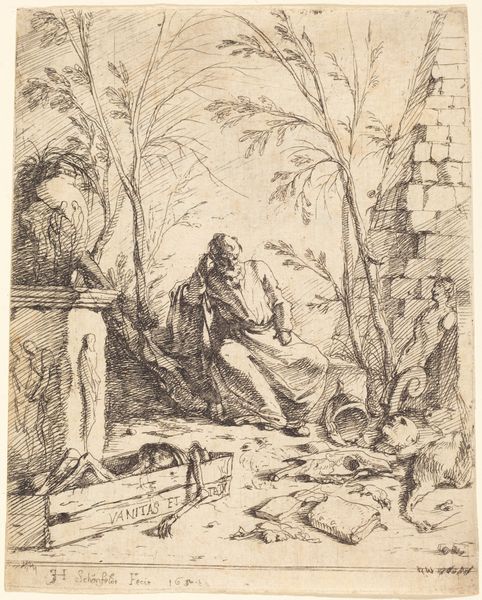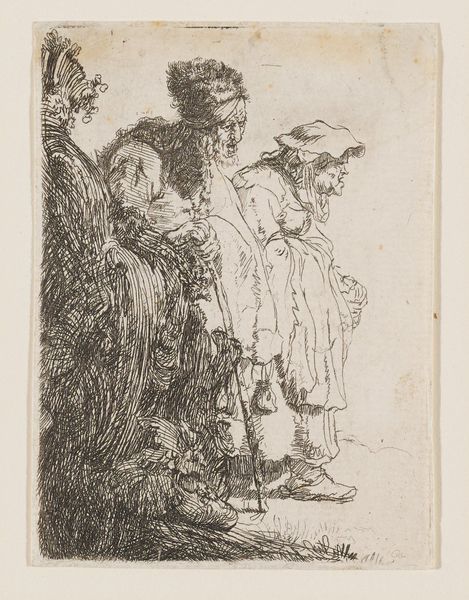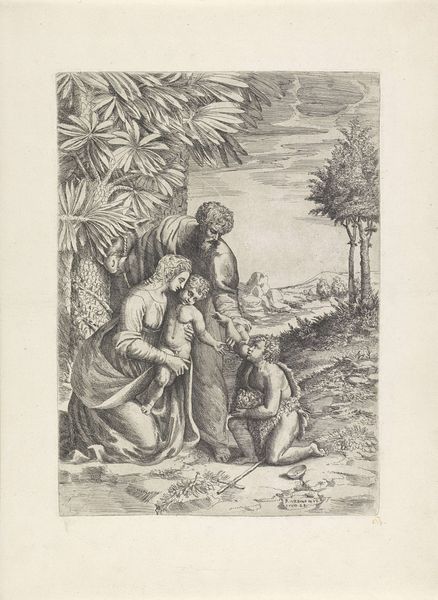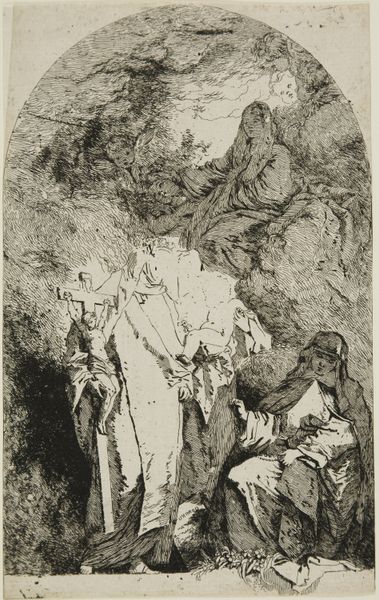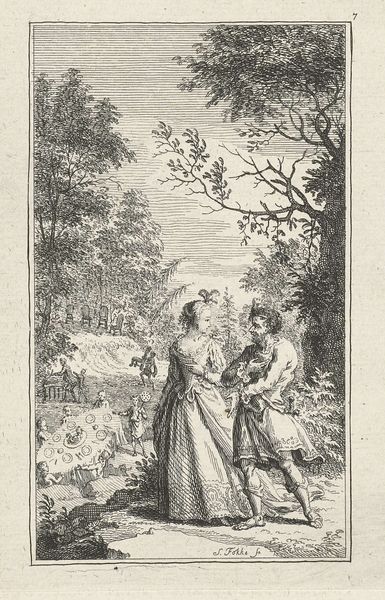
print, etching
#
narrative-art
#
baroque
#
dutch-golden-age
# print
#
etching
#
landscape
#
figuration
#
history-painting
Dimensions: height 73 mm, width 53 mm
Copyright: Rijks Museum: Open Domain
Editor: Here we have Jan Lievens’ etching, *Abraham verdrijft Hagar en Ismaël*, placing it somewhere between 1625 and 1674. It’s a compelling piece, but the somber mood is hard to ignore. All that dense etching feels fraught. How do you interpret this work? Curator: Lievens masterfully uses the etching technique to explore themes of banishment and divine promise. Consider the symbolism embedded within: the barren landscape representing Hagar's uncertain future, Abraham’s downcast gaze possibly hinting at inner conflict between patriarchal duty and human compassion, and then think of the light falling on Ismaël. Where does that place him in this story, symbolically? Editor: So, is the lighting focusing on the boy indicating that even in banishment there is hope? Or perhaps divine favor despite rejection by Abraham? Curator: Precisely! Light as a symbol of grace is a common visual theme throughout history, especially during the Baroque, so it’s fascinating to see its power deployed here, even on a small etching. Notice how the tree on the left becomes a darkening backdrop that seems to amplify Hagar and Ismaël’s displacement, and think about the psychological impact that level of contrast provides. Editor: The stark contrast really emphasizes their isolation, a feeling I didn’t pick up on initially, given the scale. Curator: It does make us wonder: what are the ethics of familial duty versus cultural or religious expectations? Lievens is reminding us how deeply images are rooted in the stories we tell ourselves as a society. The tale reverberates with every viewing. Editor: It’s fascinating to consider the story’s many layers! Curator: Absolutely. Each element contributes to the enduring emotional and intellectual power of the piece.
Comments
No comments
Be the first to comment and join the conversation on the ultimate creative platform.

